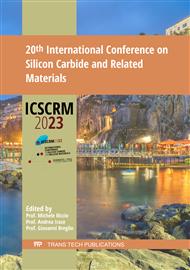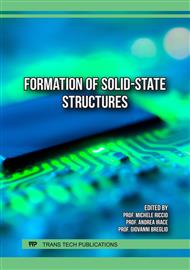p.21
p.29
p.35
p.41
p.47
p.53
p.59
p.65
p.71
Calibration of Aluminum Ion Implantation Monte-Carlo Model for TCAD Simulations in 4H-SiC
Abstract:
Ion implantation, as a way of doping the 4H-SiC crystal, is one of the key components of modern power device fabrication. Aluminum is used to form p-type wells for the body of n-MOSFETs and low resistance p-type contacts using heavy doping. Therefore, the ion implantation process needs to be controlled over a wide range of process conditions including implant energies and doses. The fact that Al in 4H-SiC exhibits very low diffusion puts additional burden on the accuracy and predictability of any ion implantation engineering. In device design, these requirements can be addressed by applying computer simulations to predict doping profiles ahead of the actual implant step performed in a manufacturing facility. The accepted way to predict doping profiles is based on the binary-collision approximation (BCA), numerically implemented as a statistical Monte-Carlo (MC) method [1]-[3]. Nowadays, one can refer to simulation packages available from commercial vendors [4] for studying ion implantation using BCA-MC algorithms. However, while the physical accuracy of BCA models implemented in these packages has shown to be quite remarkable, predictable simulations for a complex material system as 4H-SiC requires calibration from data including secondary ion mass spectrometry (SIMS) and scanning electron microscopy (SEM).
Info:
Periodical:
Pages:
47-51
Citation:
Online since:
August 2024
Permissions:
Share:
Citation:



